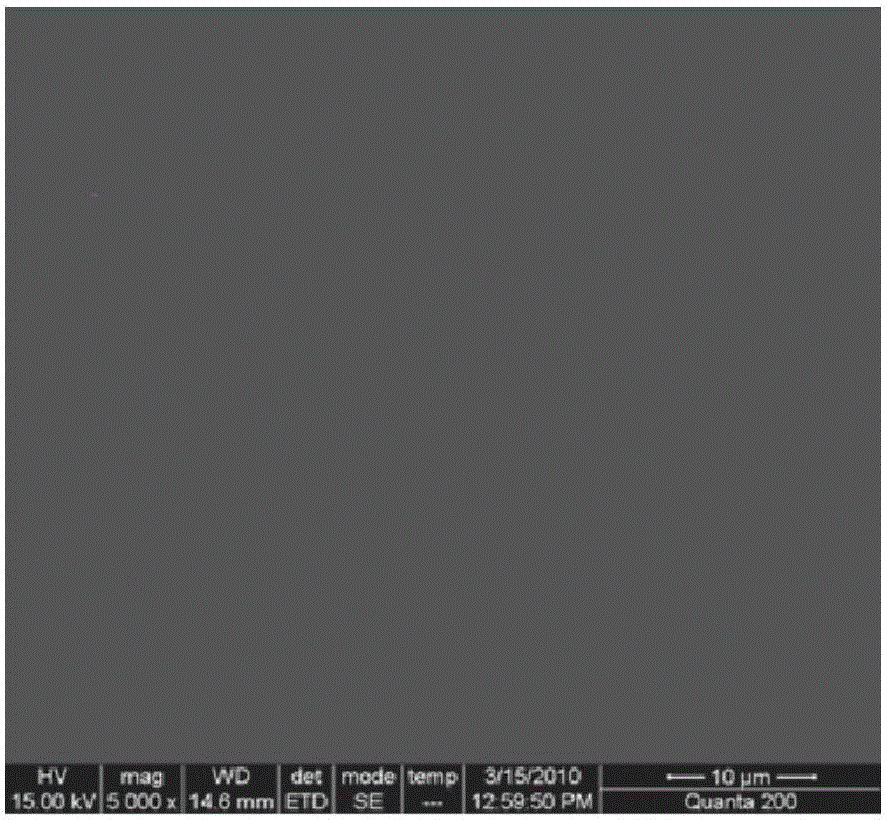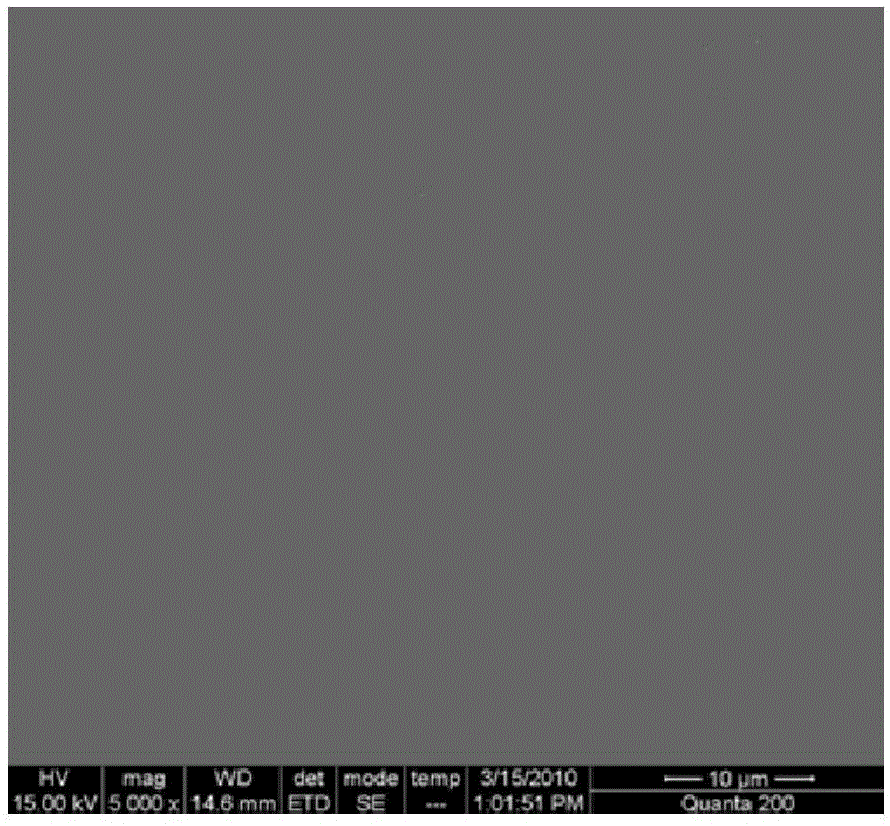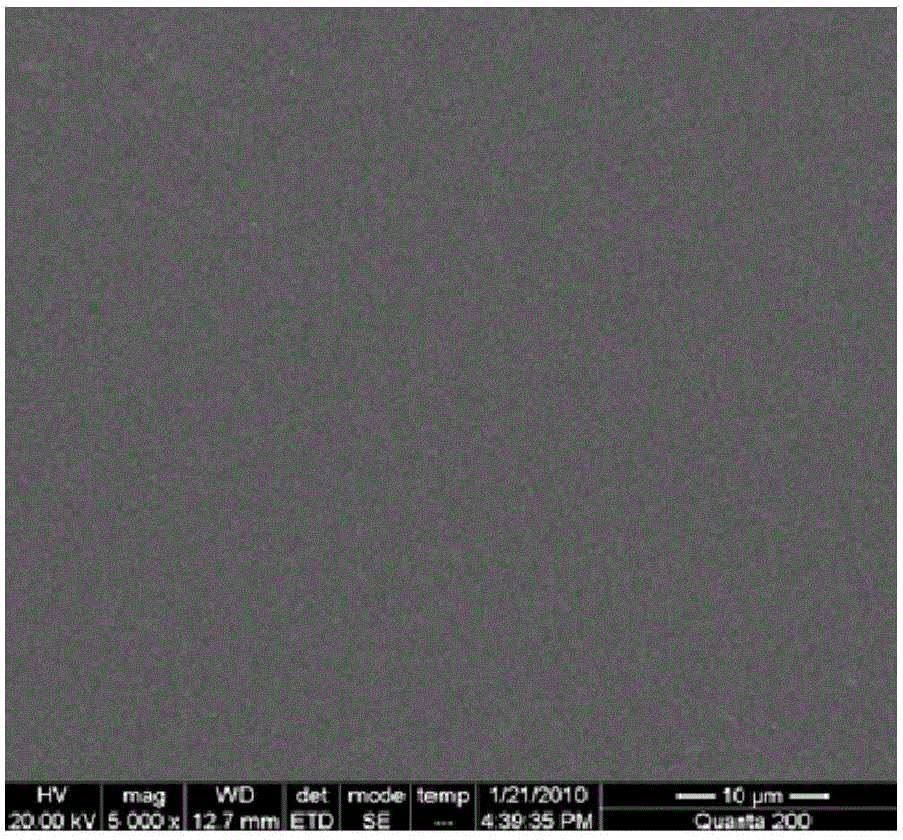Method for modifying fluorinated siloxane acrylate material of rigid gas-permeable corneal contact lens
A technology of lens fluorosiloxane acrylate and corneal contact, which is applied in the field of modified rigid gas permeable contact lens materials to achieve the effects of poor comfort, low cost and simple processing technology
- Summary
- Abstract
- Description
- Claims
- Application Information
AI Technical Summary
Problems solved by technology
Method used
Image
Examples
Embodiment 1
[0042] Ammonia plasma treatment is used as the surface treatment method, and 2-methacryloyloxyethyl phosphorylcholine (MPC) is used as the grafted molecule. The steps are as follows:
[0043] (1) The FSARGPCL contact lens material (BostonXO, Wenzhou Medical College) was cut into thin slices of about 1 mm, polished, cleaned with a digitally controlled ultrasonic cleaner for 15 minutes, rinsed with deionized water, dried at room temperature, and stored for later use.
[0044] (2) Under the ammonia plasma treatment for 120s and the discharge power of 100W, plasma treatment was performed on the FSARGPCL contact lens material.
[0045] (3) Soak the treated material in a 0.02wt% 2-methacryloyloxyethylphosphorylcholine (MPC) aqueous solution for 3 hours, during which time a magnetic stirrer is used to continuously stir.
[0046] (4) Rinse the surface of the contact lens material 3 times with deionized water, dry at room temperature, and store.
[0047] figure 1 SEM photos of the su...
Embodiment 2
[0051] Oxygen plasma treatment is used as the surface treatment method, and 2-methacryloyloxyethyl phosphorylcholine (MPC) is used as the graft molecule, and the steps are as follows:
[0052] (1) The FSARGPCL contact lens material (BostonXO, Wenzhou Medical College) was cut into thin slices of about 1 mm, polished, cleaned with a digitally controlled ultrasonic cleaner for 15 minutes, rinsed with deionized water, dried at room temperature, and stored for later use.
[0053] (2) Under oxygen plasma treatment for 120s and discharge power of 100W, plasma treatment was performed on FSARGPCL contact lens material.
[0054] (3) Soak the treated material in an aqueous solution of 2-methacryloyloxyethylphosphorylcholine (MPC) with a concentration of 0.05wt% for 2 hours, and stir continuously with a magnetic stirrer during this period.
[0055] (4) Rinse the surface of the contact lens material 3 times with deionized water, dry at room temperature, and store.
[0056] figure 2 SEM ...
Embodiment 3
[0060] Ammonia plasma treatment is used as the surface treatment method, polyethylene glycol diacrylate (PEGDA) is used as the graft molecule, and the steps are as follows:
[0061] (1) The FSARGPCL contact lens material (BostonXO, Wenzhou Medical College) was cut into thin slices of about 1 mm, polished, cleaned with a digitally controlled ultrasonic cleaner for 15 minutes, rinsed with deionized water, dried at room temperature, and stored for later use.
[0062] (2) Under the ammonia plasma treatment for 120s and the discharge power of 100W, plasma treatment was performed on the FSARGPCL contact lens material.
[0063] (3) Soak the treated material in a polyethylene glycol diacrylate 10000 (PEGDA10000) aqueous solution with a concentration of 0.01 wt% for 3 hours, and stir continuously with a magnetic stirrer during this period.
[0064] According to the above steps (1)-(3), polyethylene glycol diacrylate 4000 (PEGDA4000) was used as the graft molecule to modify the FSARGPCL...
PUM
| Property | Measurement | Unit |
|---|---|---|
| power | aaaaa | aaaaa |
Abstract
Description
Claims
Application Information
 Login to View More
Login to View More - R&D
- Intellectual Property
- Life Sciences
- Materials
- Tech Scout
- Unparalleled Data Quality
- Higher Quality Content
- 60% Fewer Hallucinations
Browse by: Latest US Patents, China's latest patents, Technical Efficacy Thesaurus, Application Domain, Technology Topic, Popular Technical Reports.
© 2025 PatSnap. All rights reserved.Legal|Privacy policy|Modern Slavery Act Transparency Statement|Sitemap|About US| Contact US: help@patsnap.com



